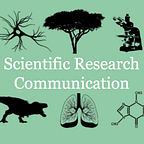The Fountain of Youth for Mice
Written by: Alex Bui
Edited by: Madeline Nicol, Grace Owens-Kurtz, and Nicholas Minor
Background
The world’s aging population continues to grow as advancements in health and technology extend the average global lifespan. Many common conditions and diseases are associated with age, creating heavy burdens for the world’s healthcare institutions. To combat the natural effects of aging, many have looked for “fountain of youth” solutions to combat the decline in health we take for granted as part of aging.
One method to reduce the health effects of aging could be availability of nicotinamide dinucleotide (NAD+), a common compound found in cells with roles related to metabolism and communication between cells. Enhancing NAD+ production in smaller lifeforms such as worms and flies extends their lifespan. NAD+ has also been reported to decrease with age in many parts of the body such as the skin, skeletal muscle, fat tissue, the pancreas, and the brain.[1] Stimulating the biosynthesis of NAD+ is one possibility for mitigating the decrease of NAD+ in the tissues and decline of health later in life. Nicotinamide mononucleotide (NMN), is a chemical intermediate found in the pathway of NAD+ production and is a potential target to increase NAD+ production in cells.
Summary
A recent study conducted by researchers Kathryn Mills et al. found that long term ingestion of NMN appeared to prevent age related health decline in mice. Several aspects of the mice’s’ health — weight gain, energy metabolism, gene expression, bone and eye health, and the composition of bone marrow and immune system cells — were affected by the consumption of NMN. Mills and her colleagues used 5-month-old male mice that were separated into three experimental groups. Two groups were given water supplemented with NMN. One of these groups consumed 300 mg of NMN for every kilogram of body mass each day. The other group consumed less, only 100 mg for every kilogram of body mass each day. The average weight of the mice at the start of the experiment was a little more than 30 grams. This rounds out to the mice in the 300 mg group having consumed about 9 mg of NMN a day, and the 100 mg group having consumed around 3 mg of NMN per day. The last group acted as a control and received untreated water.
The researchers found that the concentration of NAD+ in liver cells and brown fat tissue increased by significant levels in comparison to control mice and that eating more NMN yielded more NAD+. The mice that consumed NMN had lower body weight and less weight gain throughout the course of the experiment. These changes in weight gain appeared to be dose dependent, because the 300 mg/kg/day mice gained less weight than their 100 mg/kg/day counterparts despite consuming more food and water. Interestingly, energy metabolism of the 100 mg group was greater than that of the 300 mg group when oxygen intake, energy usage, and carbon dioxide production were measured.
Gene expression in certain tissues was profoundly affected by NMN administration. The expression of genes of the liver, skeletal muscle and white adipose tissue in control mice were shown to be very different at the beginning and end of the 12-month experiment, with most genes becoming less expressed. The 300 mg group on the other hand, experienced much smaller changes in gene expression in all tissues. Compared to the control mice, a higher percentage of the genes were expressed at the same strength throughout the experiment for NMN supplemented mice.
NMN supplements also improved the health of other tissues in the body. Mice treated with NMN appeared to have better eye health than those in the control group. All the control mice in the study were found to have many colored spots on the interior of their eyes due to a mutation of a gene in the mice. The researchers found that the 100 mg and 300 mg groups had significantly fewer spots, with 40% of the 100 mg mice and 80% of the 300 mg mice showing significant differences. Sensitivity to low light was also measured and NMN fed mice had greater nerve response to the light. Bone density was also enhanced in the mice supplemented with NMN. The mice that received greater amounts of NMN on average had higher bone density than mice that received less NMN or none at all.
Conclusions
NMN shows potential for mitigating the decline in health associated with aging. The results of this experiment show that NMN consumption has positive effects on the health of aging mice. NMN appears to have no harmful effects while enhancing the health of mice with regard to weight gain, energy consumption, and tissue health. Despite these results, conclusions should be made carefully because a lot is still unknown. Future studies should examine the effects on other model organisms and see how NMN and NAD+ changes the effects of aging. Another direction these results may suggest is researching how the additional NMN and NAD+ specifically interacts with the cellular machinery that would produce the results seen in this paper.
- Anderson, R.M., Bitterman, K.J., Wood, J.G., Medvedik, O., Cohen, H., Lin, S.S., Manchester, J.K., Gordon, J.I., and Sinclair, D.A. (2002). Manipulation of a nuclear NAD+ salvage pathway delays aging without altering steady-state NAD+ levels. J. Biol. Chem. 277, 18881–18890.
- Mills, K. F. et al. Long-Term Administration of Nicotinamide Mononucleotide Mitigates Age-Associated Physiological Decline in Mice. Cell Metabolism (2016).doi: 10.1016/j.cmet.2016.09.013
